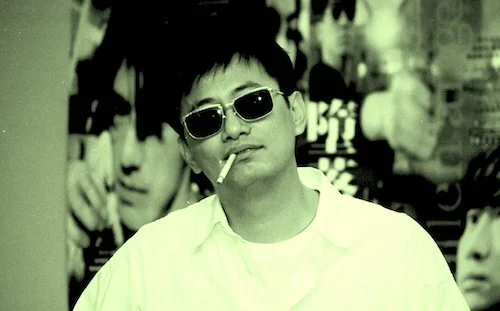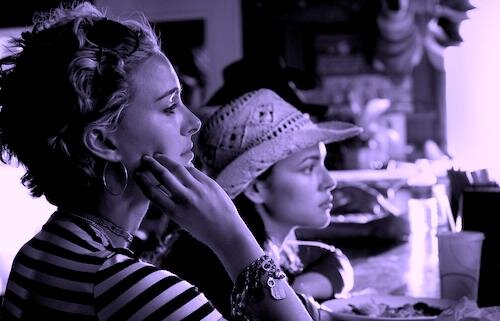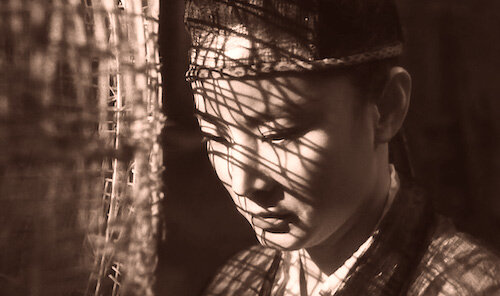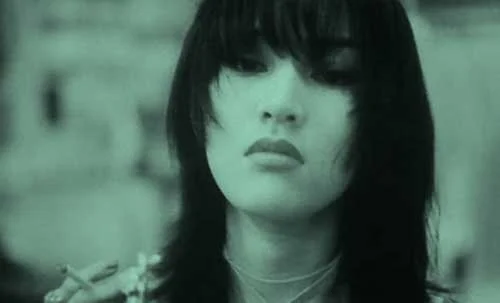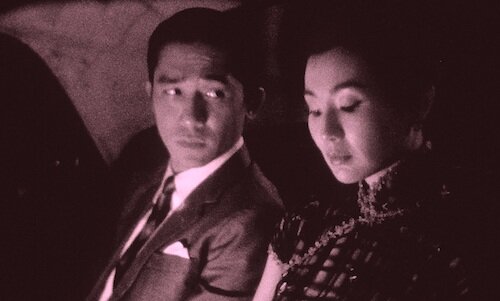Filmography Worship: Ranking Every Wong Kar-wai Film
Filmography Worship is a new series where we review every single feature of filmmakers that have made our Wall of Fame (to be released soon).
Before the 2020 pandemic hit, everything was coming up Wong Kar-wai. He was producing his first film in years, titled Blossoms. He was remastering all of his previous works as 4k, and planned to have theatrical releases of them all. The Criterion Collection release of his films was up in the air for years, until yesterday, when the coveted box set of seven of his works, was finally announced. TIFF is having digital screenings of those 4K remasters we’re been waiting for as well (it’s not a theatrical release, but it’s better than nothing, as far as I’m concerned). Blossoms continues. We’re getting back to where we were last left off with the year that was meant to be a full on celebration of the Hong Kong legend, and it seems like 2021 is actually the big year of his after all of this.
So, that calls for some filmography worship. He only has ten features so far (Blossoms will be his eleventh, and we’ll update this when it is released), so these rankings won’t last very long. Nonetheless, from a distance, Wong Kar-wai’s filmography is extremely solid. At its worst, it’s full of interesting ideas that work to a degree. At its best, the filmography of Wong Kar-wai is exemplary, and full of moments of yearning, nostalgia, daydreaming, heartache and bliss that no other director — as far as I’m concerned — has ever pulled off quite the same way. Wong clearly has a distinctive style, but he has explored the many avenues of his visions as far as he can go (and he can clearly still keep going). Without wasting any more time, let us rank — and enjoy — the filmography of one of cinema’s most aesthetically inclined auteurs: Wong Kar-wai.
10. My Blueberry Nights
The worst film in Wong’s career is easily My Blueberry Nights, but I do want to defend it a little bit. I feel like a lot of the emptiness or hokeyness the film carries is his iconic style getting lost in translation. Adapting his Hong Kong dreamscapes to an America road film doesn’t seem like the worst idea, especially because he explores the woes of love and the chasing of desires here. Perhaps he got caught up in the idea of the star studded cast, where he has a number of stories as opposed to his regular one or two (or, in the case of 2046, a handful but in a controlled environment).
While flawed, I do think My Blueberry Nights has stand out elements. There’s charm, in the form of some of the eccentric characters that Lizzie meets (Lizzie is, of course, played by Norah Jones, who is not an unusual casting choice considering Faye Wong is a Wong Kar-wai veteran by now). The darker secrets that each temporary character holds through their guilt also taps into Wong’s admiration for the vulnerable side of people (maybe observing the quirks of these American characters, especially in an era when indie films full of oddities were at an all time high, would have sufficed, especially since Wong has done this before). There’s certainly style. It’s far from a terrible film; at worst, I’d call it underwhelming but unique.
9. Ashes of Time
It is nice to see Wong go for something more ambitious, but Ashes of Time is an experiment that feels more like he was getting used to making wuxia, rather than someone who really took hold of the style (more on that later). It’s unfortunate, because you can imagine that Christopher Doyle’s occasional use of glitchy slow motion, the implementation of dynamic angles, and the richest colours would mesh so well with wuxia storytelling. While that is true, there is just something about Ashes of Time that just slows down so much, and I’m not quite sure what it is; maybe the film gets carried away with the mythological side of the genre, as opposed to the actual exhilaration.
Still, despite its flaws, Ashes of Time is a stunning film, and a great deviation from most of Wong’s other works. Seeing him work within a period piece setting, with the elements of ancient China as his backdrop, is an absolute treat. Sure, his usual effects and editing styles don’t work all of the time, but the occasional successful moment here really sticks with you. Ashes of Time is at least a more cohesive story tonally than My Blueberry Nights, and the aesthetic of a film is really just sprinkles on top if a narrative is strong enough. Ashes of Time is arguably his most polarizing film, and there are people who will claim that it is easily one of his best efforts. I’m not a part of this group, but I do understand where they might be coming from.
8. As Tears Go By
This is where Wong Kar-wai as we know him started: right at his debut As Tears Go By. In ways, it’s just so typically Wong that it’s a must for fans of his works. His fondness of nostalgia and surreality is matched with ‘80s cubic televisions projecting digital images, the dithery sensation of being up until the wee hours of the morning is at an all time high here, and his colours are the hues of this time period without question. Plus, there’s his taste in music being tossed in, and it’s one of the best Wong-related cuts in his entire career: Sandy’s cover of “Take My Breath Away”, titled “激情” (or “Passion”) here. It’s a mesmerizing tune.
As a film, it really does hold up with Wong’s other works, and I think this is where the first leap of his filmography towards greatness starts. If anything, I consider As Tears Go By to be sadly overlooked. It has just as compelling of a story as, say, Days of Being Wild, and all of the common Wong tropes that we know and love. It might be only slightly less strong as his iconic works (of which there are clearly many), but that shouldn’t mean that it gets forgotten about. Would I recommend it as someone’s first Wong film? No, unless they want to go through his films in chronological order. Still, it’s a great next step for anyone that’s exploring his career; it might even become a hidden gem favourite of yours.
7. The Grandmaster
It’s easy to compare The Grandmaster with two of the films I’ve already covered. In a sense, it’s like As Tears Go By, in that it’s only slightly less good than the best of Wong’s career, but that shouldn’t mean it’s passed over. Then, there’s the improvement over Ashes of Time with how Wong handles the wuxia genre. Here, the action is flashier and easier to follow, the mythology doesn’t suffocate the breathing room, and the presentation of Ip Man in Wong’s way (and technically Tony Leung’s as well) is done with the kind of oomph that the character deserved.
It’s sad to think that it’s been seven years since the last Wong film, and the only feature he’s made the entire decade was a period piece film that isn’t of his typical, gorgeous style, but any Wong is better than none at all. Besides, it’s his second go at a martial arts kind of epic, and he’s clearly gotten better at it (having iconic wuxia stars like Zhang Ziyi certainly helps, too). If anything, after Blossoms, I’d like to see Wong tackle films of this scope even more often. Ashes of Time was an experiment, but The Grandmaster is an open door to an entire universe of a creative mind that I don’t believe we’ve even seen the best of yet (mark my words).
6. Happy Together
Happy Together has become one of Wong’s most beloved films, especially in the age of cinephilia being shared via social media. In ways, this makes sense, because the film embodies so many of Wong’s signature traits. However, I think it goes a little bit further than this. Sure, some of his other films explore lives of crime, and lovelessness is a common theme in a number of his works. However, I do believe Happy Together — as a whole — could be Wong’s darkest film: an exploration of a dying relationship, that only worsens in the efforts to revive it.
Of course, Wong affiliate Tony Leung is here, but the actor that steals the picture is the late Leslie Cheung, who was bisexual in real life and acted as a pivotal figure in queer cinema in China (Happy Together is only one such example). Cheung is explosive here, and it makes the damnation of falling out of love hurt so much more. Other Wong works ease you into these pits of sadness, but Happy Together dives right in and stays there, even at its most “joyful”. As a powerful LGBTQ+ film, as a work of daring Chinese cinema, and simply as a Wong classic, Happy Together has been making waves recently, and it’s easy to see why.
5. 2046
It’s strange to think of any film of Wong’s as complex, because he usually tells basic stories with tons of emotional portrayals and humanistic peculiarities. However, I find it easy to crown 2046 as Wong’s densest film. It’s as if he felt this would be his final film (at least of his Hong Kong searches for love, which he hasn’t revisited since). The amounts of layers and additional compartments of this quest to find purpose are staggering. Stemming from In the Mood for Love (which stems from Days of Being Wild), 2046 is the largest narrative undertaking Wong has ever attempted. It’s a fictional story — a projection of a future where a utopia houses all of the lost loves of one’s life — within a number of different timelines in the author’s life. Wow.
Even with the webbed plot lines (which Wong jumps from at a constant basis), 2046 is still understandable on a soulful level. If you get lost, it’s at least an exquisitely beautiful picture (those dated future effects only add to Wong’s retro charm, and the rest of the film is aesthetic perfection as usual). It might be the one Wong film that demands to be rewatched multiple times to fully experience narratively, but that’s hardly a problem in this compilation of all of Wong’s finest qualities.
4. Fallen Angels
Without question, Fallen Angels is Wong’s most underrated film, and I will go on record saying this without a single doubt. What was meant to be the third story in a triptych Chungking Express just didn’t fit, and was lopped off to gestate as its own set of two stories. That’s basically a blessing, all things considered. Chungking Express is mostly blissful or bright (even at its most dangerous moments), whereas Fallen Angels wallows in cynicism much more and takes place pretty much entirely at night. It truly is the darker Chungking Express, although it holds zero relation to the latter outside of format structure.
In ways, Fallen Angels is Wong’s deepest exploration of the gangster and crime genres, and it’s (oddly enough) a breath of fresh air in that way. It’s interesting to feel legitimate danger throughout an entire Wong picture (outside of As Tears Go By, which is also quite an analysis of the gangster genre, but Fallen Angels seems to project these themes even better). Unlike the other ideas I’ve pondered about Wong working with again, I feel like he’s really nailed the lives of criminals and those close to them with Fallen Angels. Could he do better? Maybe, but I think he’s done a great job already.
3. Days of Being Wild
As Tears Go By was the first introduction of Wong’s style to the world, but Days of Being Wild was when the magic really started to happen. His second film has remained one of his best works, not because the rest of his filmography is lacking, but because Days of Being Wild is just perfect. Much of the film is the squandering of good things and the punishment of loved ones that don’t deserve that lack of warmth; all of this is told in a ‘60s Asia (Hong Kong and the Philippines) with the decade’s mint green colours to boot (thanks to Christopher Doyle, who was working with Wong for the first time here).
It’s the first sign of Wong’s ability to weave selfish desires together, which only resulted in an early glimpse at his now-iconic juggling of storylines and timelines. Besides, so many Wong veterans are here, including Maggie Cheung, Leslie Cheung, and even Tony Leung in a tiny role (like a coming-attraction to the rest of Wong’s filmography). Luckily, Wong has returned to films of such a caliber since (we’re still only at the third spot on this list, after all), but it did seem like he reached his peak right at the start of his filmography. He untapped a world of emotional ambiguity, within a candy colour dimension, as if it was beamed to us from an alien species. He didn’t go all in, as we now know: he was just giving us permanent access to how things were going to be from here on out.
2. Chungking Express
The film that brought Wong to superstardom was Chungking Express, mainly because fan Quentin Tarantino fought to have an American theatrical roll out two years after its initial release. There was just something indescribable about this film. Even within context of Wong’s filmography, Chungking Express kind of exists on its own echelon full of dizzying ecstasy, personal candidness, and daydream euphoria. Part one is a brush with danger that gets mistaken as serendipity as a means of overcoming loneliness. Part two is the misapprehension of boundaries, as personal ambitions clash into those of another and break down the walls of existence for each passersby.
Chungking Express is more identifiable as a feeling than a series of events, but even then you can’t exactly label what that feeling specifically is. That’s part of the appeal of the film. It’s one of those works that really breaks past the usual stipulations of cinema to the point of unrecognizable mastery. It’s blatant why Tarantino vowed to have this film shown to North America; it needed to become engrained in our pop culture. Everyone needed “California Dreamin’” stuck in their heads. The United States had to see interpretations of Hollywood conventions and the chasing of the American dream told by this Hong Kong visionary. Wong’s cinematic domination was inevitable, but Tarantino had to speed this process up for all of our sake.
1. In the Mood for Love
Even though Chungking Express is a rare film that’s impossible to explain in simple descriptions, Wong Kar-wai’s opus — by a very narrow margin — might be In the Mood for Love. The advantage the latter film has is that, while it’s not indescribable, it’s a reinvention of a genre that’s been done to death for literally one hundred years by now: the romance genre. Like other Wong films, the leads here are experiencing their hearts being broken; this unites both spouses of separate marriages to find solace in one another, only for them to realize how easily it was for their loved ones to fall in love in the first place. It’s the rewriting of a genre that became a basic formula over the years, and its results still have yet to be matched or even copied yet twenty years later.
The marriage of Wong’s colourful visuals and focuses on music have never been stronger than the stalking strings that accompany the uses of crimson red to detail a humble life in British-occupied Hong Kong in the early ‘60s. The film is stylish enough to hook you immediately, but then it serves a kick to your gut once it reveals its true intentions: the depths of the human heart, where guilt and adoration converge. On its first watch, In the Mood for Love is a discovery of Wong’s greatest narrative plan yet, and each subsequent watch is the viewing of two damned lovers, stuck in a swirling purgatory. In the Mood for Love is one of the finest films of the new millennium, of Hong Kong cinema, of the romantic drama genre, and of all time; it only makes sense that it’s also Wong Kar-wai’s finest achievement, too.
Andreas Babiolakis has a Masters degree in Film and Photography Preservation and Collections Management from Ryerson University, as well as a Bachelors degree in Cinema Studies from York University. His favourite times of year are the Criterion Collection flash sales and the annual Toronto International Film Festival.

